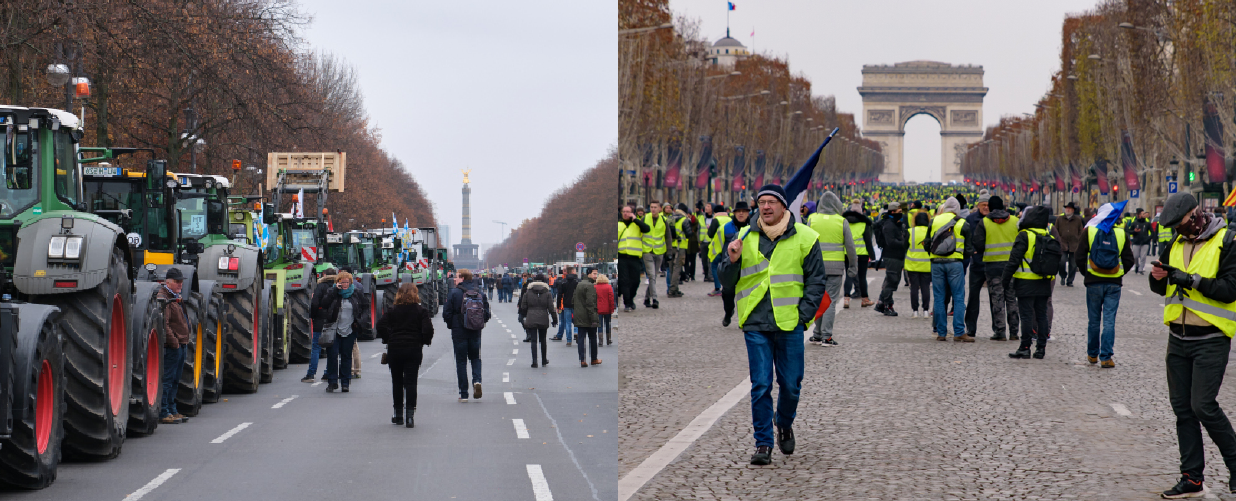‘‘Jusqu’ici, tout va bien’’ ? A Cross-Analysis of Protest Cultures in France and Germany
The influence of different protest cultures on democracy in Germany and France is complex. The protest takes various forms, serves as political representation, and contributes to the formation of political opinion.

The protest cultures in Germany and France are only partially comparable due to different patterns. Nevertheless, similarities and differences can be identified. In the past, both countries were dominated by trade unions and political parties in the protest landscape, while today, people from various social strata participate. Despite a clear overrepresentation of high levels of education, protest movements in Germany and France now reflect a broader societal picture. The diversity of protest themes and the formation of political and social movements also reflect this change. On the one hand, protest movements in Germany and France differ in the mobilization strength and intensity of protests, as well as in the influence of dissatisfaction generated by the political system, the economic situation, or social structures.
Currently, Germany shows signs of sustained or increasing protest readiness, while in France, although the number of demonstrations is decreasing, mobilization for individual protests remains at a high level. Notably, the Yellow Vest movement in France has sparked a broader discussion on social justice, economic inequality, environmental issues, and the end of representative democracy. The question arises whether the increasing intensity of protests indicates general dissatisfaction and a democracy crisis or is a sign of increased civic responsibility.
Florian Staudt is a researcher in European Studies. His work focuses on Franco-German relations and European integration.
This publication is available in French and German (pdf):
FRENCH: ‘‘Jusqu’ici, tout va bien’’ ? Analyse croisée des cultures contestataires en France et en Allemagne.
GERMAN: ,,‚Jusqu’ici, tout va bien‘ ? Deutsche und Französische Protestkultur im Vergleich“.




